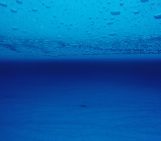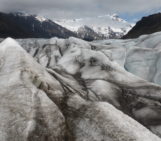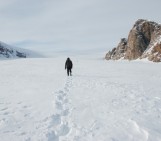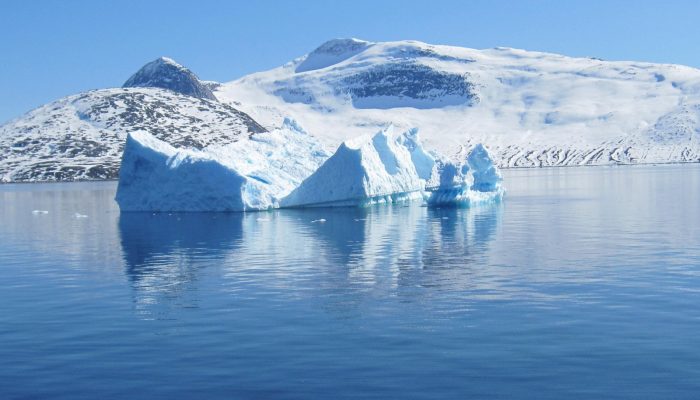
One of the most challenging research questions to address in the Arctic is how freshwater discharge from Greenland’s largest glaciers affects the biogeochemistry of the ocean. Just getting close to the calving fronts of these large marine-terminating glaciers is difficult. Fjords, hundreds of kilometers long and full of icebergs which shift with the wind and roll as they melt, make the commute a little difficult. Navigating these fjords to within a few kilometers of Greenland’s largest glaciers requires a combination of luck, skillful handling of small boats and a ‘fortune favors the brave’ attitude to sampling which would probably upset even the most relaxed of University Health and Safety Officers. The limited field data we have from Greenland’s fjords must therefore be combined with other data sources in order to understand what happens between glaciers and the ocean.
The Challenge
The amount of freshwater discharged from the Greenland ice sheet into the ocean increases in response to climate change. This may affect both the fisheries which support the island’s economy and the carbon sink associated with fjord systems – the largest per unit surface area in the ocean. As a consequence, we need to assess how exactly this cold freshwater will affect the ocean. To do so requires collaboration of scientists with different backgrounds:
-
glaciologists, to understand the different components of freshwater released (ice melt, surface runoff, subglacial discharge),
-
physicists, to understand the fate of freshwater within a dynamic water column,
-
chemists, to understand how the availability of resources shifts in response to increasing freshwater
-
biologists, to understand the net effects of multiple physio-chemical changes to the environment on living organisms.
In the context of climate change it is also always worth remembering that the increase in Greenland ice sheet discharge occurs alongside other changes in the Arctic, such as the disappearance of sea ice and warming of the atmosphere and ocean. Thus, we really must unleash 4-dimensional thinking in order to understand the processes that are currently at work in the whole Arctic.
Recent work around Greenland has shown that one particularly important factor in determining how a glacier affects downstream marine ecosystems is whether it terminates on land or in the ocean. When a glacier sits in the ocean and releases meltwater at depth, this cold freshwater rapidly mixes with deep nutrient-rich seawater. This buoyant mix, known as an upwelling plume, rises upwards in the water column. These buoyant plumes act as a ‘nutrient pump’ bringing macronutrients from deep seawater to the surface and thus driving quite pronounced summertime phytoplankton blooms. Around Greenland, these blooms are quite remarkable. Summertime productivity in the open Atlantic is generally quite limited, while the main time of year when phytoplankton bloom is spring. In several of Greenland’s fjords, however, phytoplankton bloom over the meltwater season (around May-September). Understanding how these upwelling-driven blooms operate, and more importantly how they will change in the future, is a formidable challenge. There is an almost complete lack of either physical or biogeochemical data within a few kilometers of most large marine-terminating glaciers and thus our ability to quantify the relationship between discharge and downstream productivity is limited.
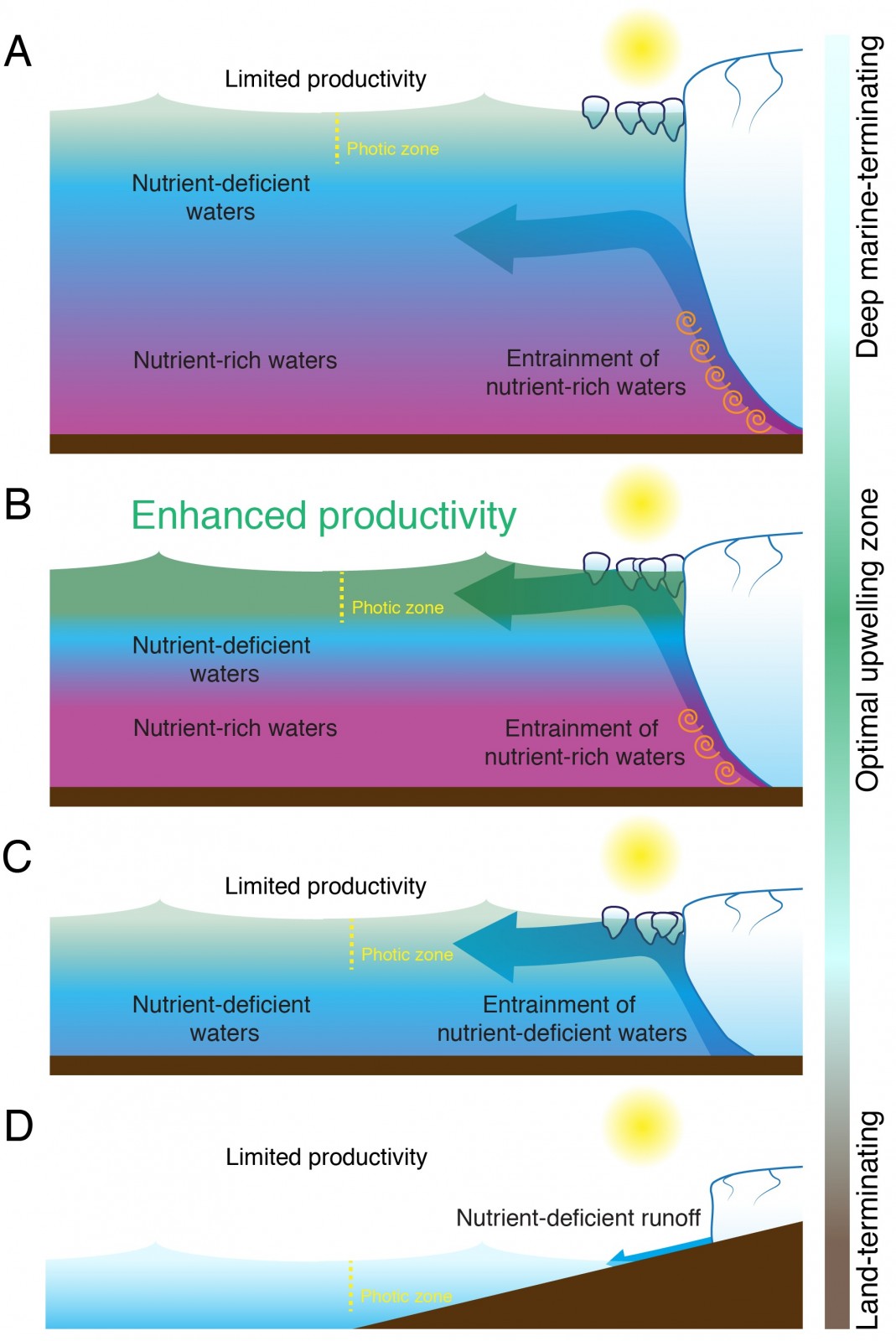
Contrasting effects of meltwater around Greenland depending on where the glacier terminates with respect to sea-level. [Credit: Fig 3 from Hopwood et al., (2018)].
Modelling what we cannot measure
Fortunately however, the field of subglacial discharge modelling is relatively well advanced. Since the 1950s, plume models have been used to describe reasonably well the subglacial discharge downstream of glaciers. Whilst all of Greenland’s glacier fjords are unique, we can at least model the processes that underpin the ‘nutrient pump’ leading to such unusual summertime productivity around Greenland.
One thing is particularly clear from the use of these models. The depth at which a glacier sits in the water column is a major factor for the magnitude of the upwelling effect. If a glacier retreats inland, this is generally bad news for downstream marine productivity. As marine-terminating glaciers retreat, the nutrient pump rapidly collapses if the glacier moves into shallower water – irrespective of what happens to the volume of discharged meltwater. For a majority of Greenland’s glaciers for which the topography under the glacier has been characterised, this will be indeed the case under climate change: as the glaciers retreat inland, their grounding lines will get shallower and shallower. The ‘nutrient pump’ associated with each one will therefore also diminish.
Outlook
There are still many things we don’t know about environmental change around Greenland, as our almost complete lack of data outside the meltwater season and very close to marine-terminating glacier termini still hinders our understanding of some critical processes. Only by adopting more inter-disciplinary methods of working and deploying new technology will these data-deficiencies be addressed.
Further reading
- Hopwood, M. J., Carroll, D., Browning, T. J., Meire, L., Mortensen, J., Krisch, S. and Achterberg, E. P. (2018): Non-linear response of summertime marine productivity to increased meltwater discharge around Greenland, Nat. Comm., 9, 3256, doi:10.1038/s41467-018-05488-8.
- Carroll, D., Sutherland, D. A., Shroyer, E. L., Nash, J. D., Catania, G. A. and Stearns, L. A. (2015): Modeling Turbulent Subglacial Meltwater Plumes: Implications for Fjord-Scale Buoyancy-Driven Circulation, J. Phys. Oceanogr., 45(8), 2169–2185, doi:10.1175/JPO-D-15-0033.1.
- Meire, L., Mortensen, J., Meire, P., Juul-Pedersen, T., Sejr, M. K., Rysgaard, S., Nygaard, R., Huybrechts, P. and Meysman, F. J. R. (2017): Marine-terminating glaciers sustain high productivity in Greenland fjords, Glob. Chang. Biol., 23(12), 5344–5357, doi:10.1111/gcb.13801.
- Straneo, F. and Cenedese, C. (2015): The Dynamics of Greenland’s Glacial Fjords and Their Role in Climate, Ann. Rev. Mar. Sci., 7, 89–112, doi:10.1146/annurev-marine-010213-135133.
- Smith, R. W., Bianchi, T. S., Allison, M., Savage, C. & Galy, V. (2015): High rates of organic carbon burial in fjord sediments globally. Nat. Geosci. 8, 450–453.
Edited by Sophie Berger and Clara Burgard
 Mark Hopwood is a postdoc at GEOMAR Helmholtz Centre for Ocean Research Kiel, Germany. He investigates how environmental changes, such as increasing freshwater discharge in the Arctic or declining oxygen in the tropics, affect the availability of nutrients to biota in the marine environment. By using a combination of fieldwork and targeted process studies the main goal is to identify and quantify biogeochemical feedbacks that act to amplify or dampen the response of marine biota to perturbations. He tweets as @Markinthelab. Contact Email: m.hopwood@geomar.de
Mark Hopwood is a postdoc at GEOMAR Helmholtz Centre for Ocean Research Kiel, Germany. He investigates how environmental changes, such as increasing freshwater discharge in the Arctic or declining oxygen in the tropics, affect the availability of nutrients to biota in the marine environment. By using a combination of fieldwork and targeted process studies the main goal is to identify and quantify biogeochemical feedbacks that act to amplify or dampen the response of marine biota to perturbations. He tweets as @Markinthelab. Contact Email: m.hopwood@geomar.de

